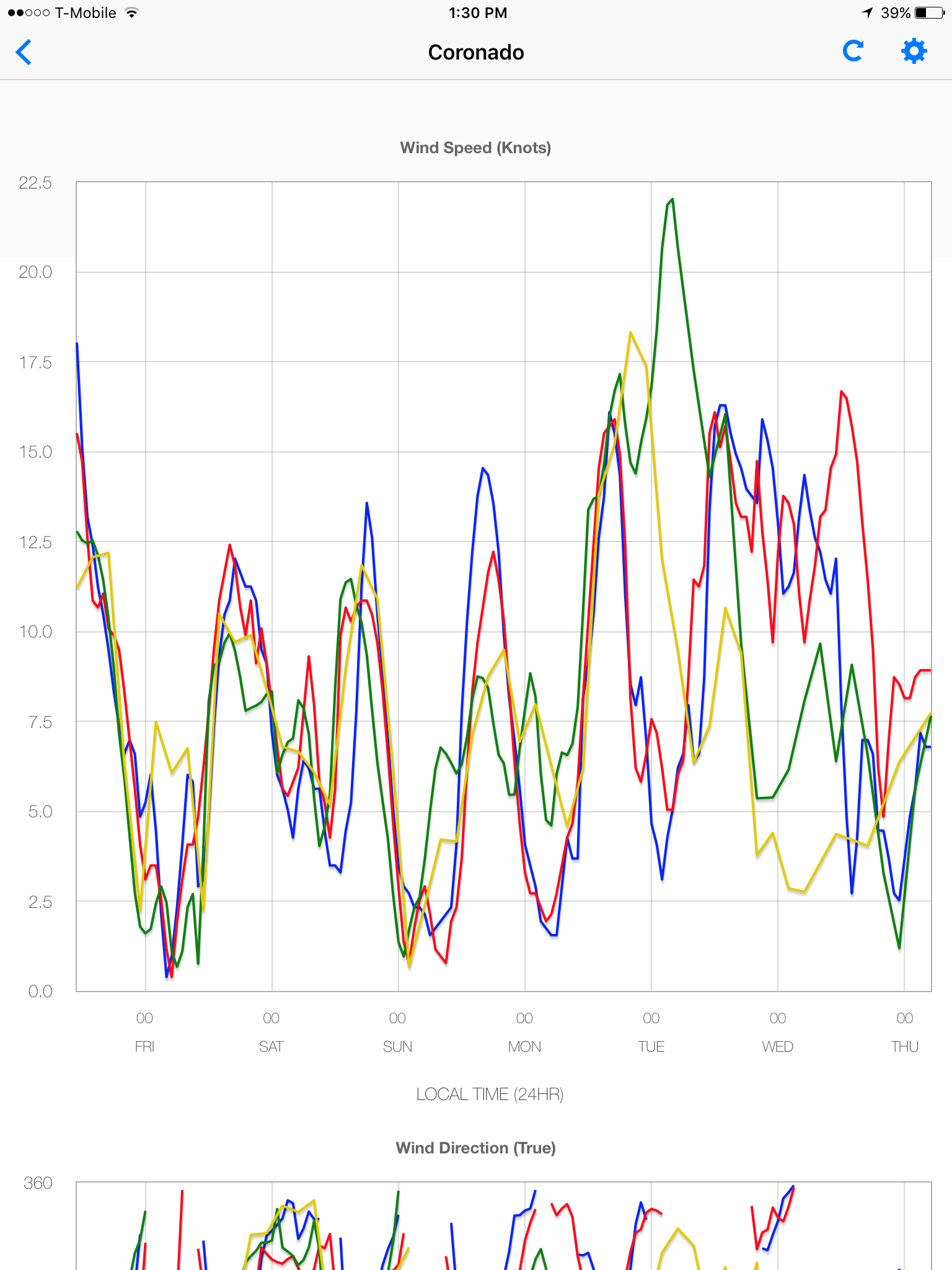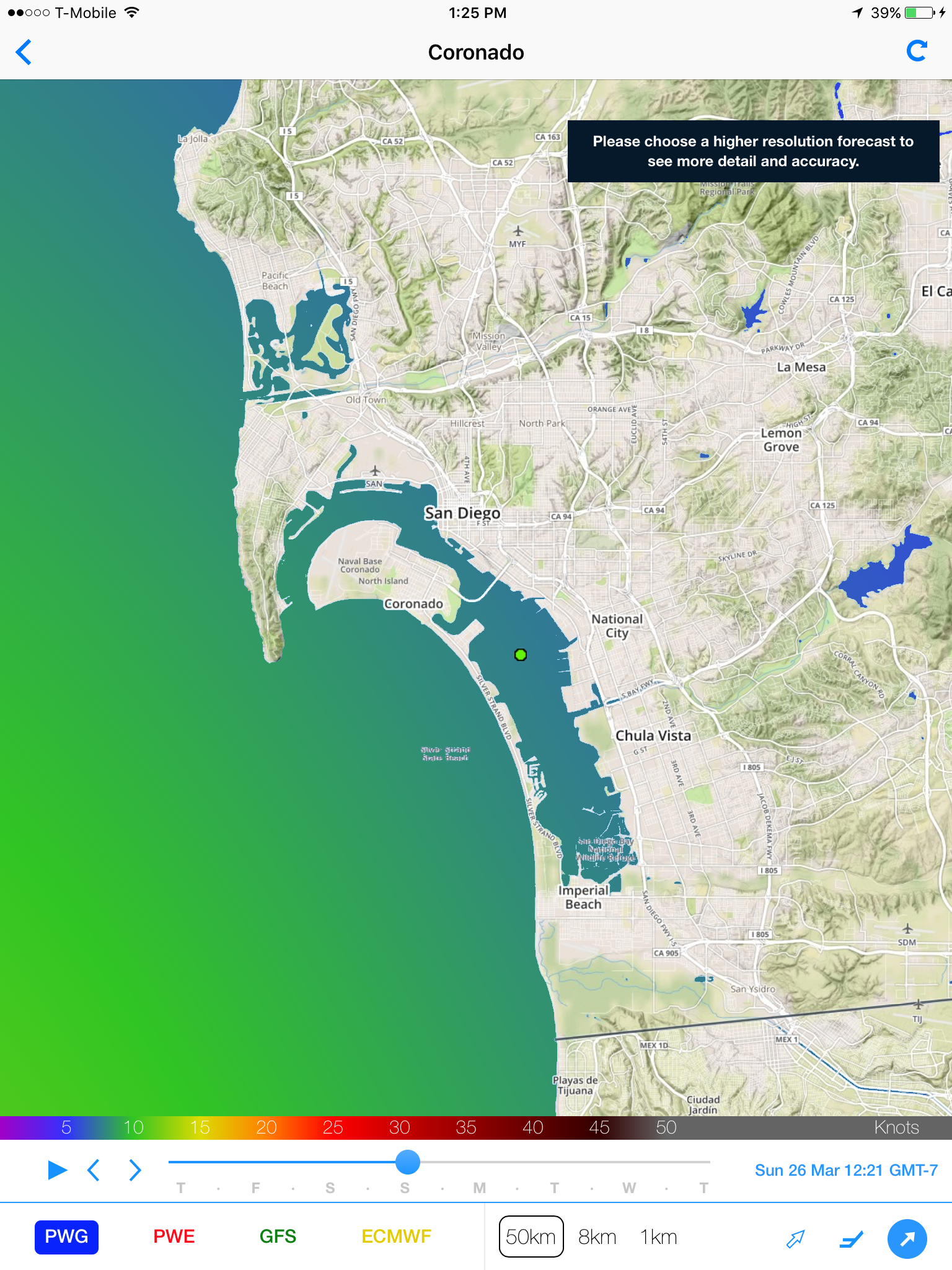Many teams have a tendency to try to get too fancy, too quickly - working on racing instead of boat handling, or full maneuvers instead of skill details. When it comes to learning the 29er, slow is fast: take your time to develop the foundations, focus on the details, and you’ll progress far more quickly than if you try to get too complicated, too soon.
The Importance of Starting is a Myth: Nail Your Escape to Move the Needle
At the 2017 49er FX World Championship, three teams went into the medal series with a shot at winning. The starting percentage for each team: 33% plan A starts, 33% Plan B starts, and 33% Plan C starts. So often in sailing we hear a story about how the top teams in the fleet are invincible on the starting line, but the reality is that - while Plan A starts make your life easy - the best teams find opportunity within the first minute and a half, no matter what they are dealt off the line. How can you learn to see that opportunity and be in the race more consistently? Identify your escape plan early and execute with confidence.
Everyone knows what a plan A start feels like - you nail the acceleration, kill a boat next to you right away, and immediately punch free to sail your own mode. You’ve made it out alive, and now all you need to do is keep the hammer down for the next three minutes while the rest of the fleet fades. Everyone also knows the feeling of the plan C start - second or third row immediately - no hope of making it to the front row. The boat is tough to accelerate, and immediately you feel the leaders slipping away, gaining ground as you suffer in their bad air.
The most subtle starting scenario is the plan B. Often times your acceleration move is good - you feel like you might break free if you can just get some breathing room on the boat to leeward… Maybe your air is clear, but your lane is somewhat compromised, preventing you from putting the bow down in the choppy sections. Around a minute off the line, you’ll likely still be in the game, but without the freedom to sail your own groove, the boat to windward starts to advance on you, and it’s a matter of time before you become the bologna in the midst of too much mayonnaise… the windward boat chomps down and you slip out the back.
Each of these scenarios has a different escape plan, and when executed correctly, each one can produce a keeper race. In the plan A start, the escape is easy: go fast for a minute and a half, and then start looking for your shift to take back. If you’re fast enough to play with the best teams, some time between 1:30 and 3:00, you’ll likely find your opportunity to tack to cross the boats on your hip. If boats around you are pinning you… Relax! Most of the top players aren’t going to let the critical moment escape, so your game is to be patient, go fast, and find yourself a nice lane to tack with the fleet. As Chris Dold likes to teach, “Your goal is to never cross anyone, and never get crossed by anyone.” That’s a super simplified version, but essentially, if you’re in the front row, you can crowd source your decision making by going with the flow.
For the plan C start, there are two facts that dictate your escape: first, you are bleeding meters every second that you stay in your current lane, so you need to bail out soon. But equally important is that if you bail too soon, another plan C boat closer to the boat end might be looking to escape at the same moment, taking away your escape route, and putting you in… plan D? We don’t talk about plan D. So how do you know when to tack? As soon as you know your start will be a plan C start, at least one set of eyeballs in your boat needs to be searching for the escape lane. Look to windward, and evaluate whether there are any boats on your hip looking for the same thing. If there are, you’ll need to wait to make sure they don’t hit you, but if not, take your opportunity! Generally the top teams end up waiting about 20 seconds to clear out, to ensure that their next lane is a big one, but they never wait more than 30 seconds! Once they pop out in the clear, it’s hammer down for three minutes while those sailing in bad lanes fade back.
Plan B boats have the luxury of clearing out from the crowd a bit before finding their clean lane to tack in, but the key is to escape before any plan A teams want to tack to avoid getting slammed on your way back across. Remember, the plan A boats are looking to go fast for a minute and a half before making their move, so as a plan B team, this is your window of opportunity. Let the plan C boats fade for about a minute while you keep your head in the boat and keep the boat ripping, then when the fleet starts to spread out a bit, look for your spot to go. Generally, if you get any kind of a header after 45 seconds of sailing, you’ll want to take what you can get, and go for a tack. Exact timing of your tack will also probably be based on how tight the fleet is. If there are a lot of plan B boats around you, the longer you can wait the better, but as soon as you start to feel bad air, you’ll need to get out of there to avoid slipping into the plan C group.
In general, the fleet is very bad at this skill! It’s a hierarchy that few people understand, and even fewer have actually articulated, which is why there’s so much opportunity in doing it well! Practice recognizing and articulating your scenario off of the line, and you’ll find that confidence comes quickly when you realize that race outcomes depend more on the escape than on the start itself.
Was this idea helpful? Check out another recent article on sailing starting, here.
29er Midwinters West Roundup
By Willie McBride
US Sailing Team Olympic Coach
Wow, what an awesome weekend of racing in Coronado! With 50 boats on the line, this was by far the most competitive 29er fleet that we've had in the US in over a decade, with some really impressive performances, and some very tight competition at the top of the fleet. Right now there are generally two different groups of teams on the race course - those who have the speed and handling to race, and those who need to focus 100% on developing those skills. Usually I focus on aspects of how to sail a 29er well, but because we had such great competition, this debrief will focus mainly on tactics and strategy.
Weather: Build Your Mental Model
Every day when I drove down to the Coronado venue from Point Loma, I drove over the Coronado Bridge, and my mind switched into race mode. Getting to see the race course from high up gives you a great vantage point to start thinking about what the wind is doing, and how the weather will effect the race course for the day. Observing where the light patches are in the morning, where the breeze develops first, how the angle evolves over the course of the morning, what the clouds look like, where the blue sky appears first, etc. can give you a really good idea of what side will pay, later in the day. If you haven't read it yet, go read Wind Strategy right now!
This weekend we saw perfect sea breeze conditions on the first day. Saturday, we saw a fog bank that sat offshore, probably with a warm top, causing the sea breeze to fight with the gradient, and delaying our nice racing conditions. Sunday was more of our normal sea breeze conditions, but with a colder temp on land, and a stronger gradient component from the north, causing a bit of a tricky transition on the water. Along with the Silver Strand geographic effects on the race course - a left bend in the wind as the wind passes over the land - all of these factors played into building a mental model for what the wind was doing. All of this is described in detail in Wind Strategy.
Once you have a mental model of what the wind is doing on the race course, the next step is to start building your strategy.
Strategy: Keep it simple
The first step here is asking yourself whether or not you can predict what the wind is doing. In a few of the races over the weekend, confidence was high, but in other races, the key realization was that you could not predict the wind's behavior, and that it was therefore better to stick to a more conservative, fleet management game plan. In either case, simplicity is the name of the game, and sticking to a simple track based strategy is a good way to keep things simple.
Image from McBride Racing Tactical Playbook
The 5 tracks that I generally ask teams to stick to are:
Tracks 1-4: Inside/outside + right/left - These tracks select the side of the course that you think will ultimately come out ahead, and then select whether you think gains will increase on the edges more quickly than risk. The McBride Racing Tactical Playbook goes into a lot more depth on these, but the bottom line is to select the side you like, and then to choose your level of risk vs. reward on each side.
Track 5: Minimize decisions - I wrote a blog entry on this a while back, that outlines what to do when you're uncertain what the wind will do next. This is more of a fleet management strategy, and was definitely appropriate for a lot of races at the Midwinters.
Once you know your track, the next step is to execute, and adapt to situations that arrise around the course using your tactical playbook.
Tactics: Build Your Playbook
There were so many tactical plays that occurred around the race course this weekend, and I don't have time to get into them all, so if you're interested in really drilling into this, please go buy the McBride Racing Tactical Playbook. A few general observations to help guide your decision making in the future:
1. Use the top middle of the course to survive when your lanes aren't great.
2. Stay on the outside of the diamond at the beginning of the downwind, and the inside in the second half.
3. Center up in the commitment zone, then own your side coming into the leeward mark.
Willie Recognized As 2016 Development Coach Of The Year
Check the full story here: https://www.sailingscuttlebutt.com/2017/02/09/u-s-coaches-year-announced/










